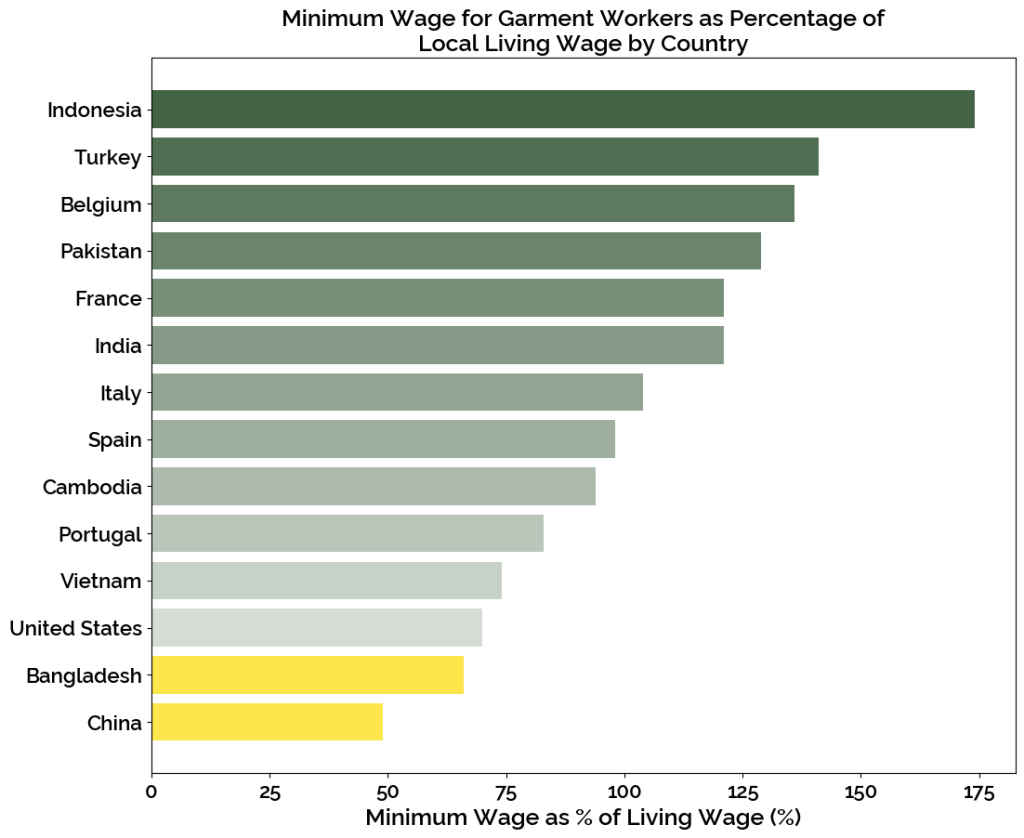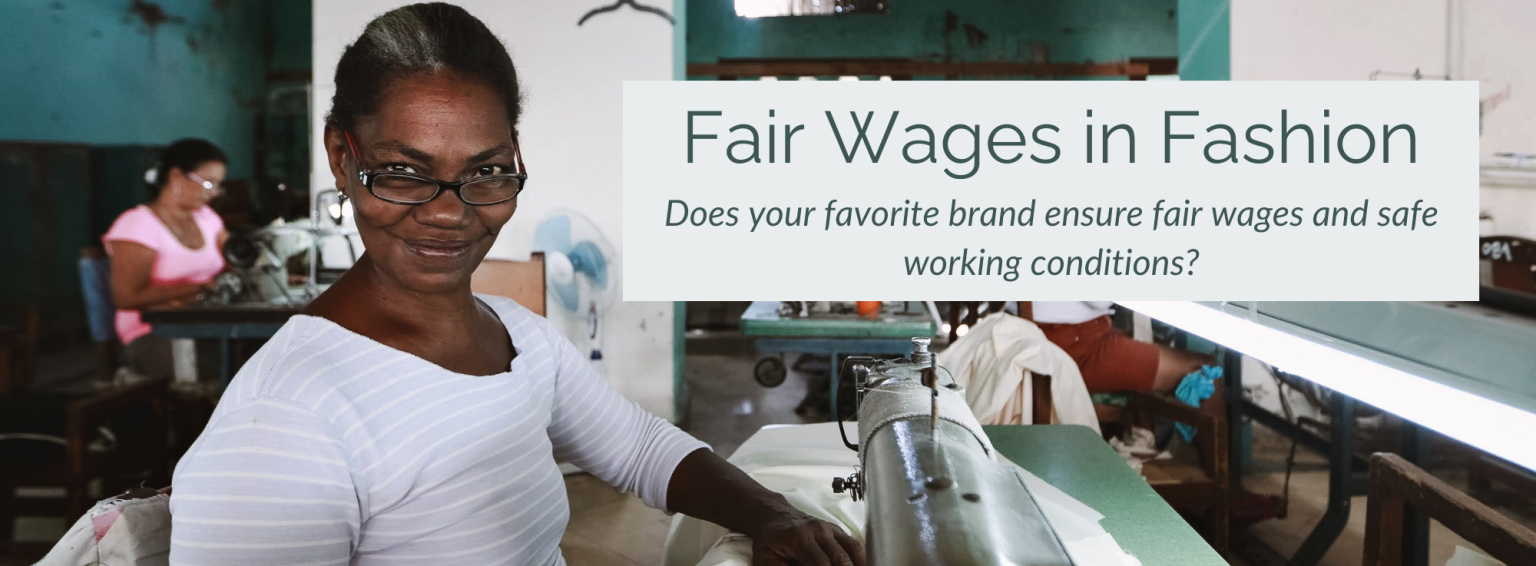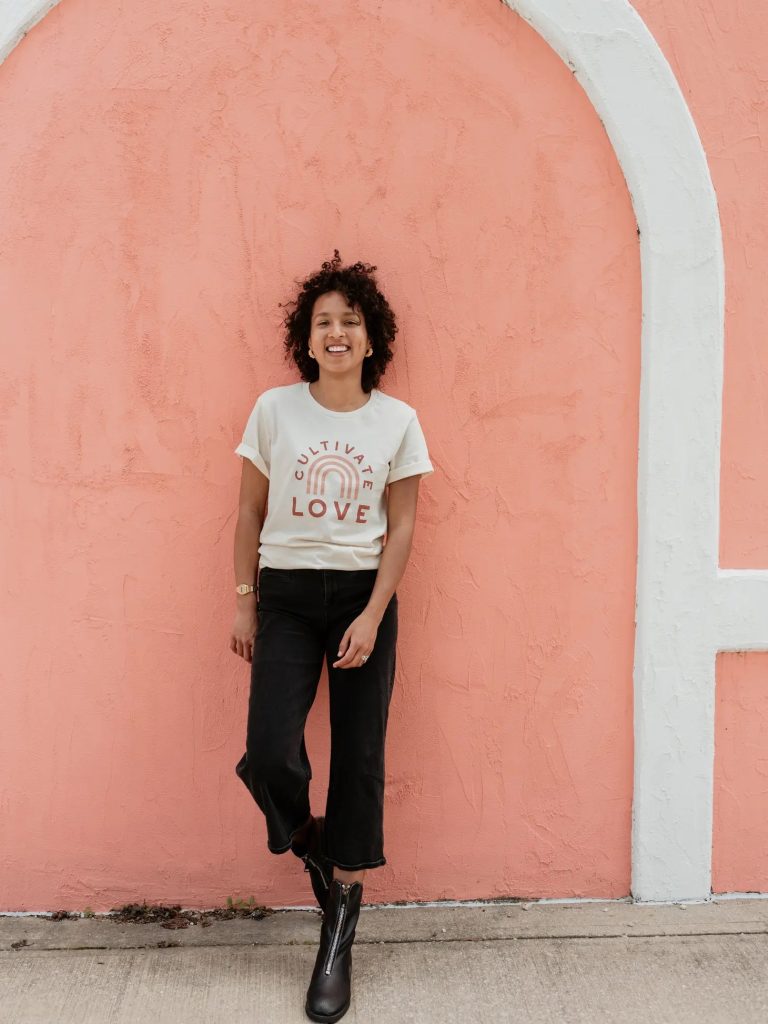In the past, fashion was marked by two main seasons: spring/summer and autumn/winter. Today, there are 52 micro-seasons, with some brands releasing new clothing and styles daily. This rapid pace means about 800 billion new garments are now produced annually, requiring many hours of labor. The fashion industry has faced significant criticism for exploiting workers and wreaking havoc on the environment, prompting consumers to demand more transparency.
Poor Pay
A common production method in the fashion industry is cut-make-trim, where workers handle the entire garment-making process from cutting to finishing. This method is perfect for mass production, aligning with fast fashion’s mission to churn out high volumes quickly. However, to meet this demand, companies often cut costs by compromising on quality and worker compensation and safety.
There are roughly 40 million fast fashion workers worldwide, but only 2% of those workers receive a living wage. Instead, workers are paid as little as .036 cents per garment, often far less than 1% of the retail price, while the remainder of the company’s profit is split between stakeholders, investors and company owners.
Protesting for better wages often isn’t feasible. In Bangladesh, garment workers striking for higher pay faced mass firings and arrests. But poor wages aren’t the only problem – long hours and unsafe working conditions are also common

Safety Last
In 2013, the Rana Plaza garment factory in Bangladesh collapsed, tragically killing over 1100 workers who were forced to work in the building despite warnings that it was not structurally sound. This disaster illustrates the dangers of prioritizing cost-cutting over safety. Unfortunately, this is just one example of how companies prioritize profits at the expense of worker safety.
Toxic chemicals are another threat in the fashion industry. From cotton pesticides to leather tanning chemicals, fabric dyes, and textile treatments, workers face exposure to over 8000 hazardous substances that can cause health problems, from skin irritation to neurological conditions to cancer. These chemicals can also remain on the final product, affecting consumers, too.
How You Can Make a Difference
So, how can you avoid supporting companies that exploit workers? Start by seeking out brands that publish corporate sustainability reports and adhere to certifications like the Social Accountability Standard (SA8000) or Fair Trade labels. These certifications enforce high standards for working conditions and create transparency throughout the production process. Consider brands that focus on ‘slow fashion’ and manufacturing quality over quantity.
It’s also important to consider the country of origin, as many garment-producing countries, especially those producing the lion’s share of clothing like Bangladesh, Myanmar, the Philippines, and China, have lax labor laws and a history of labor violations. Look for clothing made in countries like Sweden, Finland, Germany and Ireland, Portugal, and Italy, that regulate working conditions and offer fair wages, and dig deep into how a company treats its workers, regardless of its location.
Spread the word! Use social media to support ethical brands like those offering items on the Zubeezu marketplace, and hold accountable those that don’t uphold ethical standards. Talk about these issues with your friends and family to raise awareness, and sign petitions like Good Clothes, Fair Pay, which advocates for living wages in fashion. Individual actions can lead to collective change in an industry that needs it.
Support Ethical Fashion Brands
Supporting ethical fashion brands is essential to promote fair wages in the fashion industry. Choose brands that follow fair trade practices, and publish sustainability reports. Zubeezu marketplace offers a range of sustainable fashion choices from various ethical brands. Buy from such authentic sources to express your concern for workers’ well-being and also contribute to the environment.



